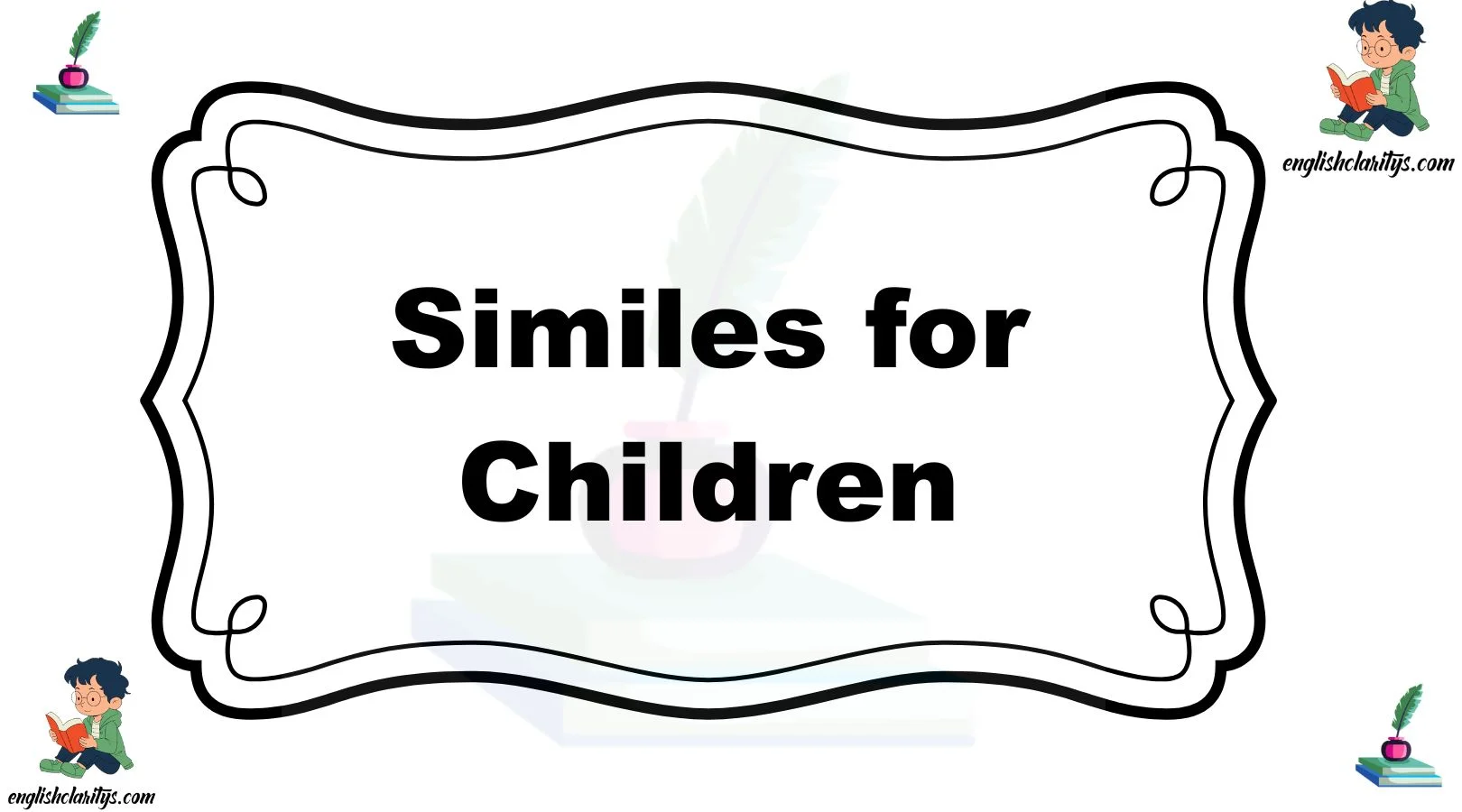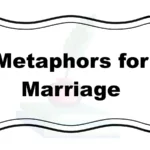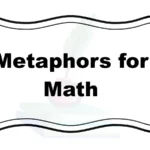Finding the right words to express how we see and feel about children can truly brighten our conversations and connections. Using similes—a figure of speech comparing two things with “like” or “as“—adds a vivid, warm touch to our descriptions.
Whether you’re a parent, teacher, or simply someone who loves children, choosing thoughtful and heartfelt similes can make your message feel more personal and meaningful. This article shares 25 beautiful similes for children, with examples, explanations, and tips to help you communicate with care and gentleness. Let’s dive into these expressions that celebrate the unique spirit of childhood!
What Does “Similes for Children” Mean?
Similes for children are phrases that compare children to relatable, vivid images or ideas using “like” or “as.” These comparisons help convey qualities such as innocence, energy, joy, or curiosity in a way that is easy to understand and emotionally touching. For example, saying a child is “as bright as the morning sun” emphasizes their liveliness and optimism.
When to Use “Similes for Children”
Similes are perfect when you want to describe children in a way that paints a clear picture or shares a feeling. Use them in stories, letters, speeches, or everyday conversations when you want to express admiration, affection, or observation with warmth. They are especially helpful in teaching, storytelling, or even casual compliments to nurture positive feelings.
Pros and Cons of Using Similes for Children
Pros:
- Makes descriptions more vivid and memorable.
- Adds emotional warmth and personal touch.
- Helps children understand abstract qualities by relating to concrete images.
- Encourages creativity and imagination.
Cons:
- Overuse can feel cliché or forced.
- Some similes might be misunderstood if the child or listener is unfamiliar with the comparison.
- Requires context to avoid confusion.
1. As Bright as the Morning Sun
Definition: Compares a child’s energy and positivity to the freshness and brightness of the early sun.
Explanation: This simile highlights a child’s lively and cheerful nature.
Example: “Emily greeted everyone with a smile, as bright as the morning sun.”
Best Use: Complimenting a child’s positive attitude or joyful presence.
Tone: Warm, uplifting, affectionate.
Other Ways to Say:
- Like a shining star
- As radiant as daylight
- Like a beam of sunshine
2. Like a Curious Cat
Definition: Describes a child’s inquisitive and explorative behavior.
Explanation: Cats are known for their curiosity, so this simile conveys a child’s eagerness to learn and explore.
Example: “Jack prowled the garden, like a curious cat discovering new scents.”
Best Use: When observing a child’s natural curiosity or investigatory spirit.
Tone: Playful, lighthearted, encouraging.
Other Ways to Say:
- Like a little explorer
- As inquisitive as a detective
- Like a bright-eyed adventurer
3. As Gentle as a Lamb
Definition: Highlights a child’s softness, kindness, and innocence.
Explanation: Lambs symbolize gentleness and purity, making this simile perfect for describing a tender personality.
Example: “She spoke to her friends as gently as a lamb.”
Best Use: Describing a child’s caring or tender nature.
Tone: Soft, loving, compassionate.
Other Ways to Say:
- Like a soft breeze
- As sweet as honey
- Like a kind-hearted angel
4. Like a Butterfly in the Breeze
Definition: Captures a child’s light, carefree, and graceful movements or personality.
Explanation: Butterflies float lightly and freely, much like a happy, unburdened child.
Example: “Tom danced around the room, like a butterfly in the breeze.”
Best Use: Describing joyful play or a carefree spirit.
Tone: Gentle, happy, whimsical.
Other Ways to Say:
- Like a feather on the wind
- As free as a bird
- Like a leaf on a stream
5. As Brave as a Lion
Definition: Compares a child’s courage and strength to that of a lion.
Explanation: Lions are symbols of bravery, so this simile celebrates a child’s fearless spirit.
Example: “Despite being nervous, she was as brave as a lion on stage.”
Best Use: Encouraging or praising courage.
Tone: Bold, empowering, supportive.
Other Ways to Say:
- Like a fearless warrior
- As strong as a bear
- Like a mighty hero
6. Like a Sparkling Star
Definition: Suggests that a child shines brightly with talent or personality.
Explanation: Stars stand out in the night sky, symbolizing uniqueness and brilliance.
Example: “Every time he solved a problem, he was like a sparkling star.”
Best Use: Praising achievement or uniqueness.
Tone: Admiring, encouraging, bright.
Other Ways to Say:
- Like a glowing gem
- As bright as a diamond
- Like a shining light
7. As Playful as a Puppy
Definition: Portrays a child’s joyful and energetic nature.
Explanation: Puppies are playful and lively, making this simile ideal for describing fun-loving kids.
Example: “The children ran around the park, as playful as puppies.”
Best Use: Describing happy, energetic moments.
Tone: Cheerful, lively, warm.
Other Ways to Say:
- Like a bouncing ball
- As lively as a squirrel
- Like a giggling breeze
8. Like a Little Seedling
Definition: Describes a child’s growth and potential.
Explanation: Seedlings represent new life and promise, perfect for expressing hope in a child’s future.
Example: “With each lesson, she grew like a little seedling reaching for sunlight.”
Best Use: Talking about development and learning.
Tone: Hopeful, nurturing, gentle.
Other Ways to Say:
- Like a budding flower
- As fresh as spring
- Like a young sapling
9. As Sweet as Cotton Candy
Definition: Highlights a child’s sweetness and innocence.
Explanation: Cotton candy is soft, sweet, and delightful, just like the tender qualities of a child.
Example: “He gave me a hug as sweet as cotton candy.”
Best Use: Expressing affection or kindness.
Tone: Sweet, affectionate, gentle.
Other Ways to Say:
- Like a warm hug
- As soft as a cloud
- Like a gentle smile
10. Like a Dancing Flame
Definition: Describes a child’s lively and energetic spirit.
Explanation: Flames flicker and dance, reflecting motion and energy.
Example: “Her laughter flickered around the room, like a dancing flame.”
Best Use: Describing enthusiasm or spiritedness.
Tone: Energetic, vibrant, joyful.
Other Ways to Say:
- Like a jumping spark
- As lively as fireflies
- Like a flickering light
11. As Gentle as a Whisper
Definition: Highlights a child’s quiet and soft manner.
Explanation: Whispers are soft and gentle, suitable for calm or shy children.
Example: “He spoke as gently as a whisper, careful not to disturb anyone.”
Best Use: Describing calmness or shyness.
Tone: Soft, peaceful, tender.
Other Ways to Say:
- Like a soft breeze
- As quiet as a shadow
- Like a gentle touch
12. Like a Rainbow After Rain
Definition: Symbolizes hope, happiness, and a fresh start.
Explanation: Rainbows appear after storms, bringing joy and optimism.
Example: “Her smile was like a rainbow after rain, brightening the gloomy day.”
Best Use: Celebrating joy or overcoming challenges.
Tone: Hopeful, bright, uplifting.
Other Ways to Say:
- Like sunshine after clouds
- As bright as a new day
- Like a fresh bloom
13. As Quick as a Whisker
Definition: Describes a child’s swift movements or sharp reactions.
Explanation: Whiskers twitch quickly, symbolizing speed and alertness.
Example: “He caught the ball as quick as a whisker.”
Best Use: Highlighting agility or fast thinking.
Tone: Playful, sharp, lively.
Other Ways to Say:
- Like a lightning bolt
- As fast as a cheetah
- Like a speedy breeze
14. Like a Gentle Breeze
Definition: Represents a child’s calming presence or softness.
Explanation: Breezes are light and soothing, perfect for describing gentle children.
Example: “Her words floated through the room like a gentle breeze.”
Best Use: Describing calm or comforting influence.
Tone: Soft, comforting, peaceful.
Other Ways to Say:
- Like a soft lullaby
- As peaceful as still water
- Like a warm hug
15. As Radiant as a Flower
Definition: Highlights beauty and happiness in a child.
Explanation: Flowers radiate color and life, reflecting a joyful child.
Example: “He stood in the sunlight, as radiant as a flower.”
Best Use: Praising beauty and happiness.
Tone: Bright, warm, affectionate.
Other Ways to Say:
- Like a blooming rose
- As bright as spring
- Like a glowing garden
16. Like a Little Firecracker
Definition: Describes a child full of energy and excitement.
Explanation: Firecrackers burst with sound and light, representing lively energy.
Example: “The kids were like little firecrackers during the party.”
Best Use: Highlighting exuberance or lively behavior.
Tone: Energetic, fun, playful.
Other Ways to Say:
- Like a bouncing ball
- As lively as a puppy
- Like a spark of joy
17. As Bright as a Firefly
Definition: Compares a child’s bright spirit to the tiny glowing insect.
Explanation: Fireflies light up dark spaces, symbolizing hope and brightness.
Example: “Her ideas shone as bright as a firefly on a summer night.”
Best Use: Complimenting creativity or brightness.
Tone: Cheerful, imaginative, inspiring.
Other Ways to Say:
- Like a glowing star
- As bright as a lantern
- Like a shining spark
18. Like a Soft Pillow
Definition: Suggests a child’s comforting and soothing nature.
Explanation: Pillows provide softness and comfort, just like a loving child.
Example: “He was like a soft pillow when I felt tired.”
Best Use: Describing comfort and warmth.
Tone: Gentle, caring, soothing.
Other Ways to Say:
- Like a warm blanket
- As comforting as a hug
- Like a gentle touch
19. As Bright as a Candle
Definition: Reflects a child’s inner light and warmth.
Explanation: Candles light up dark places, symbolizing hope and guidance.
Example: “She shone as bright as a candle in the classroom.”
Best Use: Praising leadership or helpfulness.
Tone: Warm, encouraging, kind.
Other Ways to Say:
- Like a shining light
- As glowing as a lantern
- Like a guiding star
20. Like a Playful Breeze
Definition: Describes a child’s carefree and lively spirit.
Explanation: Breezes can be playful and light, much like joyful children.
Example: “He moved through the playground like a playful breeze.”
Best Use: Describing lightheartedness and fun.
Tone: Joyful, lively, carefree.
Other Ways to Say:
- Like a skipping stone
- As free as a bird
- Like a laughing stream
21. As Gentle as Morning Dew
Definition: Symbolizes a child’s delicate and fresh nature.
Explanation: Morning dew is soft and fresh, reflecting innocence.
Example: “Her touch was as gentle as morning dew on leaves.”
Best Use: Describing tenderness or new beginnings.
Tone: Soft, fresh, tender.
Other Ways to Say:
- Like a soft whisper
- As light as a feather
- Like a calm morning
22. Like a Little Songbird
Definition: Portrays a child’s sweet voice or cheerful personality.
Explanation: Songbirds sing melodiously, symbolizing joy and lightness.
Example: “Her laughter was like a little songbird in the morning.”
Best Use: Describing pleasant sounds or happiness.
Tone: Cheerful, bright, musical.
Other Ways to Say:
- Like a gentle melody
- As sweet as a lullaby
- Like a chirping bird
23. As Bubbly as Soda
Definition: Describes a child’s effervescent and lively nature.
Explanation: Soda bubbles and fizzes, representing excitement and energy.
Example: “He was as bubbly as soda at the birthday party.”
Best Use: Highlighting enthusiasm and joy.
Tone: Fun, lively, cheerful.
Other Ways to Say:
- Like sparkling water
- As lively as a festival
- Like a bursting balloon
24. Like a Little Angel
Definition: Suggests innocence, kindness, and purity.
Explanation: Angels symbolize goodness and protection, making this simile perfect for a gentle child.
Example: “She helped everyone around her like a little angel.”
Best Use: Praising kindness and care.
Tone: Loving, gentle, reverent.
Other Ways to Say:
- Like a caring spirit
- As pure as snow
- Like a bright light
25. As Free as the Wind
Definition: Portrays a child’s independence and carefree spirit.
Explanation: Wind moves freely and unpredictably, symbolizing freedom.
Example: “He ran across the field as free as the wind.”
Best Use: Celebrating independence and adventure.
Tone: Bold, spirited, joyful.
Other Ways to Say:
- Like a soaring eagle
- As wild as a river
- Like an open road
Conclusion:
Using similes for children adds warmth, color, and emotional depth to how we express our thoughts about the little ones in our lives. These comparisons help capture their innocence, energy, kindness, and growth in ways that feel heartfelt and meaningful. Whether you’re encouraging, praising, or simply describing, similes allow your words to resonate with care and creativity. When chosen thoughtfully, they enrich your communication with a tone that is empathetic, playful, or inspiring — always reflecting the special qualities that make each child unique.
MCQs:
1. Which simile best describes a child full of curiosity?
a) As gentle as a lamb
b) Like a curious cat
c) As brave as a lion
d) Like a soft pillow
2. What simile would you use for a child who is joyful and full of energy?
a) Like a butterfly in the breeze
b) As playful as a puppy
c) Like a little seedling
d) As gentle as a whisper
3. Which simile fits a child showing courage?
a) As brave as a lion
b) Like a rainbow after rain
c) As sweet as cotton candy
d) Like a dancing flame
4. If a child is calm and soothing, which simile works best?
a) Like a little firecracker
b) Like a soft pillow
c) As quick as a whisker
d) Like a sparkling star
5. Which simile represents growth and potential?
a) Like a little seedling
b) As bright as the morning sun
c) Like a gentle breeze
d) Like a songbird
6. What simile could describe a child’s sweet personality?
a) As sweet as cotton candy
b) Like a bouncing ball
c) As bright as a candle
d) Like a firefly
7. Which simile best describes a child’s quick movements?
a) As quick as a whisker
b) Like a gentle whisper
c) As radiant as a flower
d) Like a rainbow after rain
8. What simile shows a child’s bright and shining personality?
a) Like a dancing flame
b) As bright as a firefly
c) Like a little seedling
d) As gentle as a lamb
9. Which simile would you use for a child who comforts others?
a) Like a soft pillow
b) Like a little firecracker
c) As bubbly as soda
d) Like a curious cat
10. Which simile is perfect for a child who is carefree and free-spirited?
a) As brave as a lion
b) Like a little angel
c) As free as the wind
d) As gentle as morning dew
11. What simile describes a child who spreads joy like light after darkness?
a) Like a rainbow after rain
b) As bright as a candle
c) Like a sparkling star
d) Like a little seedling
12. Which simile fits a child’s lively and playful nature?
a) Like a little firecracker
b) Like a soft pillow
c) Like a gentle breeze
d) Like a gentle whisper
13. Which simile shows a child’s tender and kind nature?
a) Like a curious cat
b) Like a little angel
c) Like a bouncing ball
d) Like a dancing flame
14. What simile represents a child who is bright and hopeful?
a) As radiant as a flower
b) As quick as a whisker
c) As playful as a puppy
d) Like a soft pillow
15. Which simile best captures a child’s musical or cheerful voice?
a) Like a little songbird
b) Like a firefly
c) Like a curious cat
d) Like a rainbow after rain
Answers:
- b) Like a curious cat
- b) As playful as a puppy
- a) As brave as a lion
- b) Like a soft pillow
- a) Like a little seedling
- a) As sweet as cotton candy
- a) As quick as a whisker
- b) As bright as a firefly
- a) Like a soft pillow
- c) As free as the wind
- a) Like a rainbow after rain
- a) Like a little firecracker
- b) Like a little angel
- a) As radiant as a flower
- a) Like a little songbird
FAQs:
1. Why should I use similes when talking about children?
Similes create vivid, emotional imagery that helps people visualize and connect with what you’re saying. They’re especially powerful when talking about children, as they highlight their innocence, joy, curiosity, and energy in a way that feels both relatable and poetic.
2. Are similes better than metaphors when describing children?
Both have their place, but similes are often easier to understand, especially for younger audiences or in storytelling. Similes use words like “as” and “like”, making the comparison more explicit and clear—perfect for educators, parents, and writers engaging with children or writing about them.
3. Can similes help children understand emotions better?
Absolutely! Similes help children connect abstract feelings with concrete images. For example, saying “as calm as still water” can help a child grasp what calmness feels like. It enhances emotional literacy and builds their imagination.
4. When should I avoid using similes for children?
Avoid similes if the comparison may confuse, frighten, or feel inappropriate. Also, overusing similes in short writing can dilute their impact. Use them intentionally for the best effect—especially when you want to highlight a specific quality.
5. Can children create their own similes too?
Yes! Encouraging children to make their own similes is a great creative exercise. It helps them express their feelings, understand comparisons, and improve their language and writing skills. Try asking them, “What’s something as fast as you?” and watch their imaginations light up!




